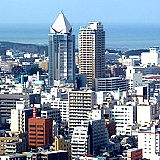
|
Chubu Region Japan Last Updated: 12/17/2024 |
| Chubu is a region in the central part of Honshu, the main island of Japan. It is one of the country's nine regions and consists of nine prefectures: Aichi, Fukui, Gifu, Ishikawa, Nagano, Niigata, Shizuoka, Toyama, and Yamanashi. Its population was 23,010,276 in 2019. | |
| - Geography and Location: Chubu is located in the central part of Japan and spans a diverse range of landscapes. It is characterized by mountains, including the Japanese Alps, the Hida Mountains, and Mount Fuji, as well as coastal areas along the Pacific Ocean and the Sea of Japan. - Cities and Urban Centers: Chubu is home to several major cities, including Nagoya (the largest city in the region and the fourth-largest in Japan), Niigata, Hamamatsu, Shizuoka, Kanazawa, and Toyama. These cities offer a mix of modern infrastructure, cultural attractions, and economic significance. - Natural Beauty: Chubu is renowned for its stunning natural beauty. The region is dotted with national parks, lakes, hot springs, and scenic spots. Nagano Prefecture is famous for its snow-capped mountains and ski resorts, while the Fuji Five Lakes area in Yamanashi Prefecture offers breathtaking views of Mount Fuji. - Cultural Heritage: Chubu is rich in cultural heritage and historical sites. Kanazawa is known for its well-preserved samurai and geisha districts, as well as its beautiful Kenrokuen Garden. Shirakawa-go and Gokayama, UNESCO World Heritage sites, feature traditional thatched-roof houses known as gassho-zukuri. - Cuisine: Each prefecture in Chubu has its own culinary specialties. Nagoya is renowned for its unique dishes like hitsumabushi-grilled eel on rice and miso katsu-pork cutlet with red miso sauce. Niigata is famous for its high-quality rice, sake, and seafood. - Industry and Economy: Chubu is an industrial powerhouse and contributes significantly to Japan's economy. Nagoya is a major manufacturing center, particularly for the automotive industry. The region is also known for its technology, aerospace, and machinery sectors. - Transportation Hub: Chubu is well-connected by transportation networks. Nagoya serves as a major transportation hub with an international airport, bullet train-Shinkansen connections, and extensive highway networks. The region's accessibility makes it convenient for travel within Japan and beyond. - Festivals and Events: Chubu hosts a variety of traditional festivals and events throughout the year. The Nagoya Festival, Takayama Festival, Niigata Festival, and the Shizuoka Festival are among the notable celebrations that showcase local traditions, music, dance, and vibrant parades. - Outdoor Activities: Chubu offers a wide range of outdoor activities for nature lovers and adventure enthusiasts. These include hiking in the Japanese Alps, skiing in Nagano, exploring the Tateyama Kurobe Alpine Route, and enjoying water sports in the coastal areas. - Onsen-Hot Springs: Chubu is known for its onsen culture, with numerous hot springs scattered across the region. Many resorts and ryokans-traditional Japanese inns offer relaxing onsen experiences, allowing visitors to soak in mineral-rich waters and enjoy traditional Japanese hospitality. Chubu is a region that combines natural beauty, cultural heritage, modern cities, and economic significance. Whether it's exploring historical sites, indulging in local cuisine, enjoying outdoor activities, or experiencing traditional festivals, Chubu offers a diverse and captivating experience for visitors to Japan. | |
Wikipedia
Japan » Chubu
Place » City

|
Shirakawa Place » Town Shirakawa is a village located in Ōno District, Gifu Prefecture, Japan. It is best known for being the site of Shirakawa-gō, a small, traditional village showcasing a building style known as gasshō-zukuri. Together with Gokayama in Nanto, Toyama. As of 1 January 2019, the village had an estimated population of 1,630. 83 views 💖 1 👍 0Japan |

|
Lake Kawaguchi Place » Outdoors Lake Kawaguchi is located in the town of Fujikawaguchiko in southern Yamanashi Prefecture near Mount Fuji, Japan. It is the second largest of the Fuji Five Lakes in terms of surface area, and is located at the lowest elevation. 71 views 💖 1 👍 0Japan |

|
Mount Shirouma Place » Outdoors Mount Shirouma is a peak in the Hida Mountains range of the Japanese Alps, located in Nagano Prefecture and Toyama Prefecture, central Honshu, Japan. At 2,932 metres (9,619 ft), it is the highest peak in the Hakuba section of the Hida Mountains, and one of the top "to climb" peaks for Japanese hikers. 74 views 💖 1 👍 0Japan |
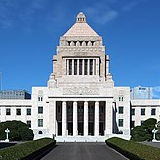
|
Japan Place » City Japan is an island nation located in East Asia, bordered by the Pacific Ocean on the east and the Sea of Japan on the west. It is known for its rich history, unique culture, beautiful landscapes, and advanced technology. Japan has a population of almost 125 million, of which nearly 122 million are Japanese nationals (2022 estimates). 548 views 💖 1 👍 0Japan |

|
Kamikochi Place » Tourism Kamikochi, located in Nagano Prefecture, Japan, is a stunning alpine valley within the Chubu Sangaku National Park (commonly known as the Japanese Alps). Renowned for its breathtaking natural beauty, Kamikochi is a popular destination for hiking, photography, and enjoying pristine landscapes. 125 views 💖 1 👍 0Azumi, Matsumoto, Nagano 390-1516, Japan |

|
Chubu Sangaku National Park Place » Outdoors Chubu Sangaku National Park, located in central Honshu, Japan, is one of the country's most breathtaking national parks. It spans across Nagano, Toyama, Gifu, and Niigata prefectures and is renowned for its stunning alpine scenery, featuring some of Japan's tallest peaks in the Northern Japanese Alps (Hida Mountains). 113 views 💖 1 👍 012883-1 Chikuniotsu, Otari, Kitaazumi District, Nagano 399-9422, Japan |

|
Taisho Ike Pond Place » Outdoors Taisho Pond was formed in 1915, when an eruption of the nearby volcano Mt. Yakedake dammed the Azusa River. The decayed trees in and around the pond add a special ambiance to the scene, as well as a subtle reminder of the destruction wrought by volcanic activity. 295 views 💖 1 👍 0Japan, Nagano, Matsumoto, Azumi |
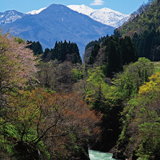
|
Hakusan National Park Place » Outdoors The Hakusan National Park is one of Japan's most famous mountainous national parks, comprising Mt. Hakusan and its surrounding areas which cover a total area of 47,700 ha. One hundred million years ago, what is now the Hakusan region was the bottom of a lake, which gradually elevated and formed a volcano after recurrent volcanic eruptions. Hakusan National Park has been a mountain of worship from ancient times. 376 views 💖 1 👍 0Shiramine, Hakusan, Ishikawa Prefecture 920-2501, Japan |
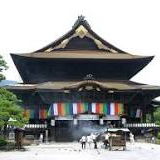
|
Zenkoji Place » Temple Zenkoji is a Buddhist temple located in Nagano, Japan. The temple was built in the 7th century. Nagano City, established in 1897, was originally a town built around the temple. 511 views 💖 3 👍 0Motoyoshicho-491, Nagano, 380-0851, Japan |
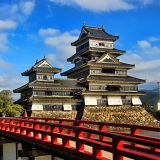
|
Matsumoto Castle Place » Historical Place Matsumoto Castle, also known as Matsumotojo, originally known as Fukashi Castle, is a famous historic castle located in Matsumoto City, Nagano Prefecture, Japan. It is one of the country's premier original castles and a designated national treasure. 507 views 💖 4 👍 04-1 Marunouchi, Matsumoto, Nagano 390-0873, Japan |
